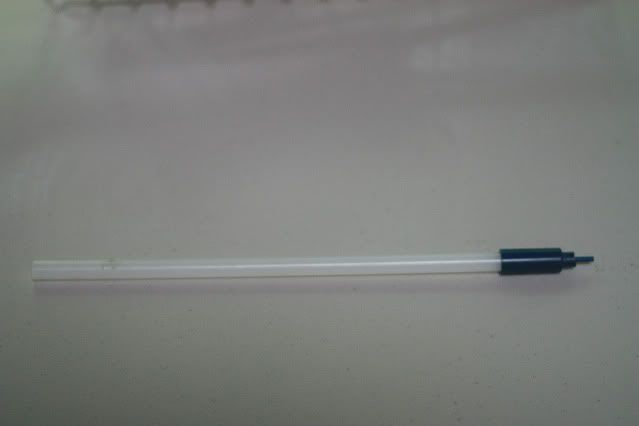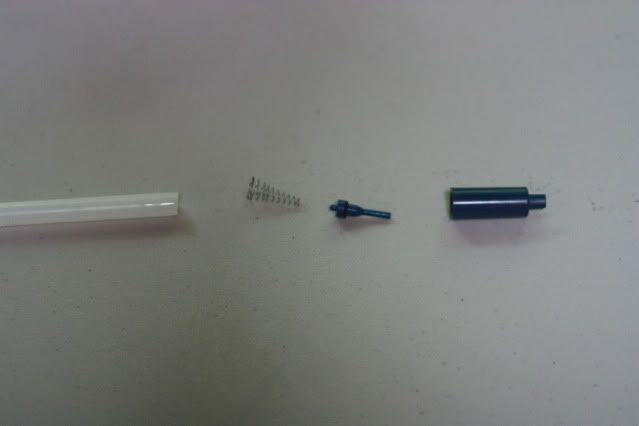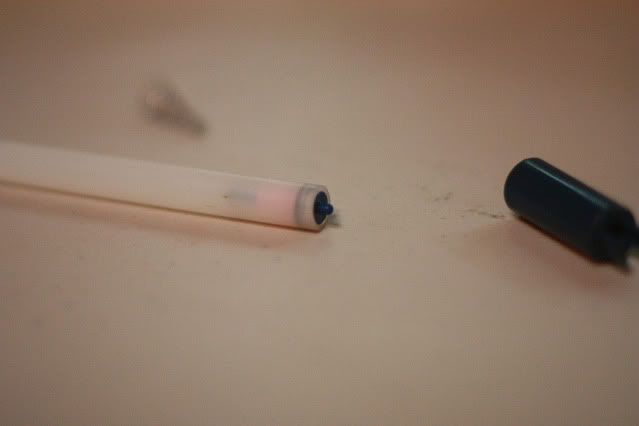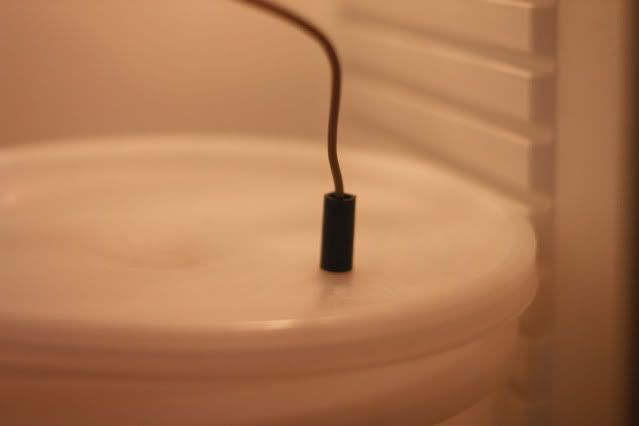Was racking my brains looking for a way to get my fridge mate probe into the beer without drowning it. So I was basically looking for a tube that was sealed at one end and had a collar at the other end so I could hang it in the airlock hole. I came up with this.
We've all got one of these lying around somewhere, probably from our very first instant-home-brew-kit. If not I think they are about $6 at a supermarket

If you pull it apart you'll find all the bits you need for a quick and dirty thermowell

basically take the little blue pointy bit, discard the spring, cut off the long part if you want so you can get the probe further down. it has a rubber o-ring already so just push it into one end of the tube point first and you have an instant plug. The little knob on the end is handy for removing it when you want to sanitise. Mine wasn't a perfect seal so I took off the o-ring and wrapped a couple of turns of plumbers tape around the end then put the o-ring back over the top. The extra thickness was enough to form a water tight seal but be careful not to let the tape hang over the edge or you'll make some nice crevices for nasties to hide in. I suppose you could also just put a squirt of silicone in the end and use the plug the keep the beer away from the silicone.

plug in:

At this point it will fit into an airlock grommet though it's a tight fit. If you want to hang it the larger blue bit makes a perfect collar. The hole at one end is just a fraction too small for the fridgemate probe so you can either drill it out or just cut the end off. It seems to be slightly tapered inside so you need the end closest to the two prongs to get a tight fit.

A dab of blutack should seal the end to stop air getting in and out and keep the reading relatively accurate.
Another alternative for a collar which I just tried it get one the nozzles you use on silicon guns. If you cut it at the right place you get a snug it for the tube and the taper flares out so you can wedge it tightly in the airlock hole (sans grommet). They have ridges at the fat end which act as a collar so you don't have to worry about accidently pushing it through the hole. I got mine short enough that I can sit another fermenter on top without touching it.
To sanitize just pull out the plug, pull off the collar and throw them all in.
We've all got one of these lying around somewhere, probably from our very first instant-home-brew-kit. If not I think they are about $6 at a supermarket

If you pull it apart you'll find all the bits you need for a quick and dirty thermowell

basically take the little blue pointy bit, discard the spring, cut off the long part if you want so you can get the probe further down. it has a rubber o-ring already so just push it into one end of the tube point first and you have an instant plug. The little knob on the end is handy for removing it when you want to sanitise. Mine wasn't a perfect seal so I took off the o-ring and wrapped a couple of turns of plumbers tape around the end then put the o-ring back over the top. The extra thickness was enough to form a water tight seal but be careful not to let the tape hang over the edge or you'll make some nice crevices for nasties to hide in. I suppose you could also just put a squirt of silicone in the end and use the plug the keep the beer away from the silicone.

plug in:

At this point it will fit into an airlock grommet though it's a tight fit. If you want to hang it the larger blue bit makes a perfect collar. The hole at one end is just a fraction too small for the fridgemate probe so you can either drill it out or just cut the end off. It seems to be slightly tapered inside so you need the end closest to the two prongs to get a tight fit.

A dab of blutack should seal the end to stop air getting in and out and keep the reading relatively accurate.
Another alternative for a collar which I just tried it get one the nozzles you use on silicon guns. If you cut it at the right place you get a snug it for the tube and the taper flares out so you can wedge it tightly in the airlock hole (sans grommet). They have ridges at the fat end which act as a collar so you don't have to worry about accidently pushing it through the hole. I got mine short enough that I can sit another fermenter on top without touching it.
To sanitize just pull out the plug, pull off the collar and throw them all in.




